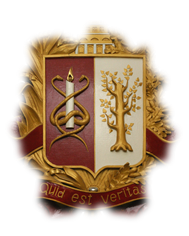Issue: 2018, Vol. 23, No. 4
REHABILITATION PECULIARITIES IN PATIENTS WITH INFECTIOUS COMPLICATIONS AFTER HIP JOINT IMPLANTATION
- Keywords
- rehabilitation, periimplant infection, implantation, hip joint, articulation spacer.
- Abstarct
- Objective – to develop rehabilitation program in patients with periimplant infection after hip joint implantation by spacer usage and to determine its effectiveness in comparison with «Fasttrack» technology. Material and methods. Retrospective comparative analysis of the treatment findings was made in 87 patients who undergone the operative fixation of articulation spacer on the base of officinal implant with cement fixation; there was observed deep suppuration after total hip joint implantation. Two groups of patients were chosen as follows: 41 patients were enrolled into the first (comparison) group; they undergone standard rehabilitation program in the postoperative period; 46 patients were enrolled into the second group; their rehabilitation program included physical activity limitation and some physiotherapeutic techniques with predominantly anti-inflammatory action. The evaluation of the efficacy of these rehabilitative measures was performed at the moment of their discharge from the hospital and after two months. esults. Average duration of the stay at the hospital in patients from the first group was amounting to 34,1 ± 1,1 days, in patients from the second group – 22,3 ± 0,8 days (p < 0,05). Pain syndrome intensity was proved to be higher in the patients of the first group in comparison with the patients from the second group both at the moment of the discharge from the hospital 5,8 ± 0,1 and 3,2 ± 0,2 points, p < 0,05 respectively) and in two months (4,6 ± 0,1 points, p < 0,05). Within two months after the discharge from the hospital the initial resorption signs of inflammatory process relapse were marked in 43,6% of the 1 group and in 24,7% of the 2 group (p < 0,05). Initial resorption signs were observed 2,6 times more in patients from the 2 group. In two months after the discharge from the hospital the indices of life quality practically upon all parts of the questionnaire were significantly higher in the patients from the 2 group. Physical health component which indirectly reflected lower limb function was significantly higher in the 2 (main) group (60,5 ± 1,9 and 51,6 ± 3,0 points, p < 0,05 respectively). Conclusion. Temporary implant allowed to maintain limb supportability and joint motion in patients with infectious complications after hip joint implantation. Restrained usage of remedial gymnastics in combination with well-founded physiotherapeutic measures in such patients was conducive to the best functional result.


 22-28_Новиков
22-28_Новиков